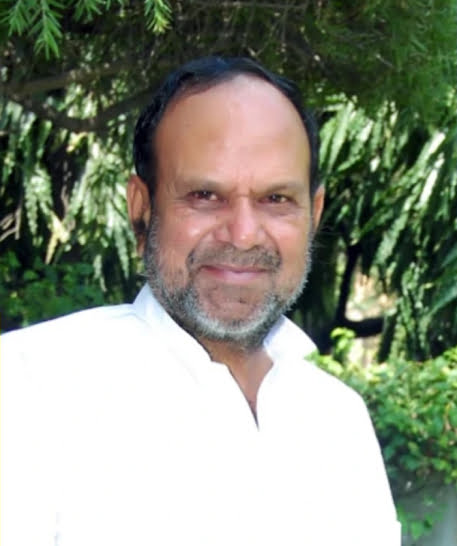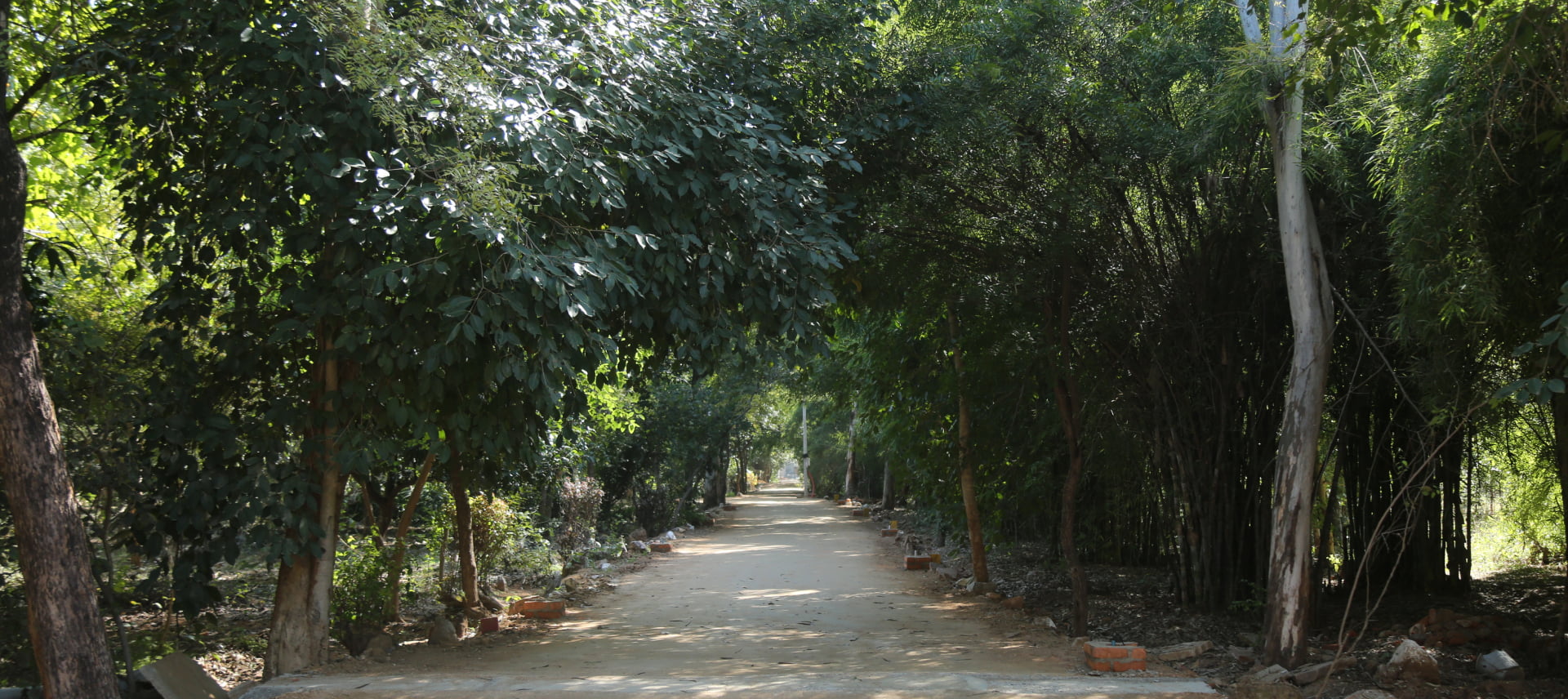
Shatam Jeeva’s land was barren when first found in 1983 by Late Pandit Ramesh Kumar Sharma ji. He was a visionary, philanthropist and a social worker who was extremely devoted to his community. It is said that not even a single tree was present on the property at the time of its finding. The land was infertile and dry; many would term it fruitless. However, Sharma Ji was a dedicated and passionate man. By the year 1994, over one lakh trees were planted by him across this hundred-acre farm.
This intellectual property comes with a rich history. Sharma Ji carefully curated the land by importing medicinal plants and trees from all over the country, ensuring that the soil was imported with the trees, unifying fragmented cultures through them. These trees were systematically placed by first digging four-by-four feet deep holes in the ground. These holes were then filled with natural pre-watered manure. He referred to this process as giving the trees their “tiffin.” Bamboo trees were also strategically placed on the boundaries of the farm to prevent animals from entering.
These thoughts urged the Sharma Family to further contribute to society. Under the guidance of the family’s matriarch – Mrs. Anuradha Sharma Ji, a prominent social worker and activist, they decided to do what they knew best – making Ayurveda easily accessible and known throughout India and thus giving birth to Shatam Jeeva, the first wellness brand in India to emerge during the post-pandemic era.

As the farm grew, so did the concern of finding adequate water for the trees… but Sharma Ji had a plan. In the late 1980s, during the monsoon months, he noticed how a nearby dam reservoir brimmed with extra water. The idea of bringing this water into the farm struck him. But how was he to do it?
He decided to harvest this water at a time when the concept was rarely practiced. Sharma Ji was ahead of his time once again. Smaller check dams were built near the farm to bring the water closer. He chose electrical pumps to carry the extra water into the farm. But the challenge was far from over; he needed to figure out a way to distribute this water across the farm evenly. Luckily, this is where the hillock at the property came in handy. The water was directed through the hillock into the farm. Gravity drains were built to channel water to all the trees in the land.
Moreover, fourteen wells were dug over the years to make water easily accessible, and if all these efforts were not notable enough, Sharma Ji went an extra mile by giving the wells their “tiffin” too. Holes were dug next to the wells that served as water reservoirs to feed the wells after the monsoon seasons. These wells and drains can be found running parallelly across the entire farm, sustaining the farm’s greenery even today.
The trees on the farm were never cut. In dire weather conditions, they were replanted. They’ve been protected from animals, regularly watered, and are looked after with the same dedication even today. For the family, honouring the farm is like honouring their late father. Not only does the hundred-acre property possesses a sentimental and intellectual significance, but its roots are also deep-seated in cultural as well as spiritual singnificance.
In 1994, an event was held at the farm where the governor Moti Lal Vohra, planning commission head – Dina Nath Tiwari and all India Ayurvedic head Surendra Sharma were present. The 1,00,000th tree was planted at this conference. This event was followed by a National level Ayurvedic conference in which forest conservatives and all Indian vaids were also present. These conferences were held from time to time to discuss the progression of Ayurveda and forest conservation in India.
The medicinal ambiance created by the trees at the farm is nothing like you would have ever experienced. You can witness the love they harbour since their conception. It is felt the minute you enter the farm.

